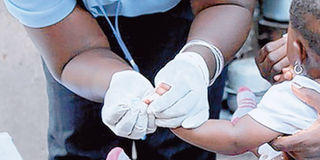Climate change, water and the spread of diseases

Half a century ago concerns about climate change, environment vulnerability, population density and the sustainability of earth systems reached a broad audience. This was clear from books like the Silent Spring published in 1962, and The Limits to Growth published 10 years later.
These works influenced environmental activism at the time. They also laid the foundations for growing scientific evidence that climate change was happening and was negatively affecting the earth. But one piece of the puzzle has been missing: the impact of climate change on people, and specifically, on public health.
This changed at the beginning of this century with growing advocacy and gatherings such as the Conference of Parties and the publication of new research.
Scientists began writing about the earth moving into a new era called the Anthropocene. This is an era in which ecosystems were increasingly being affected by human behaviour, and in which people were being affected by the changes brought about by their actions.
The Anthropocene provided the impetus for renewed attention on health and sustainability for all species. This new understanding led to increasing new research, across disciplines, to new interdisciplinary journals, and to policy documents on the impact of climate change on health. Major new insights began to emerge.
These included the fact that changes in weather patterns were affecting the behaviour of mosquitoes. This in turn was affecting our ability to control disease. A raft of work also started to emerge on the affects of changing weather patterns, heat waves, and access to clean water on people’s health.
The next step along this journey was that academics came to realise that they can’t work in disciplinary silos. For example, health scientists came to grasp that they need anthropologists, sociologists and economists for a full understanding of the impact of climate change. The circle of knowledge has, as a result, begun to expand.
Parallel to these efforts, artists and advocacy groups have worked to keep climate change on international and national policy agendas. For example, artists have taken inspiration and drawn from scientific research in engineering, chemistry, biology, and the earth sciences to make their art.
In a first of its kind on the African continent, these efforts are reflected at a 10-day public and academic programme at the University of the Witwatersrand. The programme enmeshes art and science to provoke new thinking about water and how its politicisation affects public health.Extreme weather events, shifts in temperature variation and precipitation, and higher mean temperatures have dramatically affected human health and well-being.
From a health perspective, incremental environmental changes over time have undone decades of investment in the control of infectious diseases. Many of these are water-borne and water-washed diseases, such as dysentery and scabies. They are result of poor personal hygiene because of inadequate water availability. These diseases, common throughout Africa, are often described as neglected diseases of poverty.
Scientists have started to explore the various affects in different settings in relation to different diseases.
For example, changes in temperature and rainfall have, in turn, changed the behaviour of vectors such as mosquitoes, flies and snails, with other factors complicating the spread of disease (for a summary, see). This means the settings that create the conditions for debilitating and potentially fatal diseases such as malaria, zika, and dengue have shifted. For example, mosquitoes have moved to new areas, introducing infection to previously unaffected people and certain animals.
Anthropologists have used a different lens to understand the impact.
Climate change has, most notably, begun to affect weather patterns. Changes in precipitation and quantity, floods and droughts, and water insecurity are increasingly common as the planet warms.
Scientists have begun to track how this affects food production and other farming activities. This in turn affects people’s livelihoods and food security. These changes are increasingly being followed not just by climate scientists, but also by academics from disciplines as wide-ranging as economics and politics.
Creative interventions
Scientists across disciplines – social, biological, and physical sciences as well as the humanities and arts – need to continue to work on ways to interrupt disease transmission in the context of global warming. They seek to identify appropriate interventions where climate change affects health – and to come up with creative solutions that cut across narrow paths of thinking.
Artists and civil society have a key role to play by creating narrative, visual and acoustic forms to support advocacy on issues of climate change, pollution, the ecology and environmental justice.
The author is Distinguished Professor, Public Health and Medical Anthropology, University of the Witwatersrand



